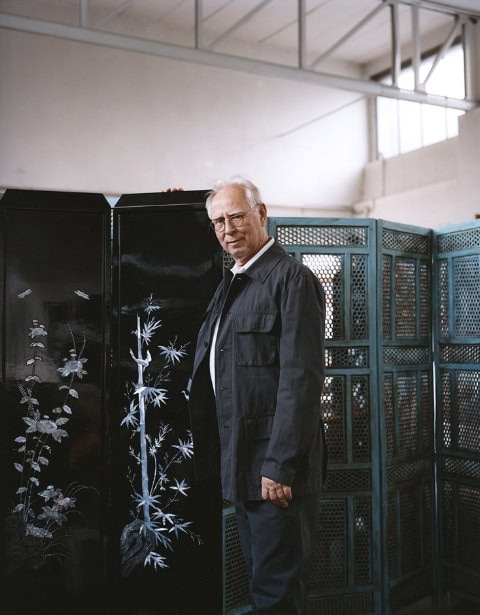Sigmar Polke was the ironist among the painter stars. A man who pursued the noble business of art-making with good humor. He was considered a great experimenter, using chemistry for "painting" pictures and frosted glass to create flip images. Although the Cologne artist (1941–2011) was always ranked at the forefront, he preserved the laughter about art and society. Sigmar Polke played where others fought. For his 80th birthday, the Kunstforum Ostdeutsche Galerie Regensburg and the Kunsthalle Düsseldorf celebrated him in 2021 with special exhibitions.
Born on March 23, 1941, in Lower Silesia’s Oels, Polke came to West Germany in 1953, completed an apprenticeship in stained glass in Düsseldorf, and then studied until 1967 at the art academy with the informal painters Karl-Otto Götz and Gerhard Hoehme. In 1963, he sat with the later gallerist Konrad Fischer and fellow student Gerhard Richter in a Düsseldorf furniture store and exhibited himself. The action was labeled as "Capitalistic Realism" as a parody of the Socialist Realism of the GDR and the general shopping frenzy of the FRG. While the Germans were buying refrigerators and furniture, Polke focused on decorative fabrics and patterned newspaper images. Seemingly naive, he utilized fabric prints with floral and abstract patterns as if they were painted. In 1968, he placed Dürer’s hare on a checkered wool blanket and later outlined it with a rubber band.
When he was not yet employing an army of assistants in his Cologne studio, he personally handled dangerous raw materials like lead white, manganese, cobalt, or silver bromide while donned in a protective suit, monitored the oxidation of steaming essences, and sought the magical beauty in the bare material. This alchemist of art, who held a professorship at the Hamburg University of Fine Arts from 1977 to 1991, produced "negative values" in 1982 with violet pigment and oil on a base of rust-proof paint. Their mysterious shine was achieved with synthetic color pigments mixed with gasoline and petroleum. In 1986, he was honored with the Golden Lion in the German Pavilion at the Venice Biennale. Here, he coated or sprinkled large canvases with photosensitive chemicals, pigments, grains, graphite, and gum arabic, allowing the sun and humidity at the Canal Grande to "paint" the images. They evoke fictional landscapes, transitions from this world to the next, concrete and magical spaces of display.
Polke was not just an alchemist who played with the elusiveness of color and light. In 1963, he discovered the raster principle of mass media image printing techniques as a motif and method for his art – as a puzzling game between three-dimensional objects and two-dimensional abstract image points. In the "lens images" around 2003, he treated his image carriers with silicone mass and a ribbed squeegee, creating wavy surfaces. They shimmer like flip images or holographies, with image layers penetrating each other like in a psychedelic phantasmagoria. One cannot precisely locate the motifs because the transparent plastic layers obstruct the view of the image background.
In 2009, Polke made a connection to his beginnings as a glass artist. The master of boundary dissolution, who passed away on June 11, 2011, in Cologne, created spectacular windows in Zurich’s Grossmünster. In the shimmering interplay of thin polished slices of agate and glass, he treated the mystery of the incarnation of God. Again, it was about a changing of different ways of seeing and interpreting in the sublime play of colors.
